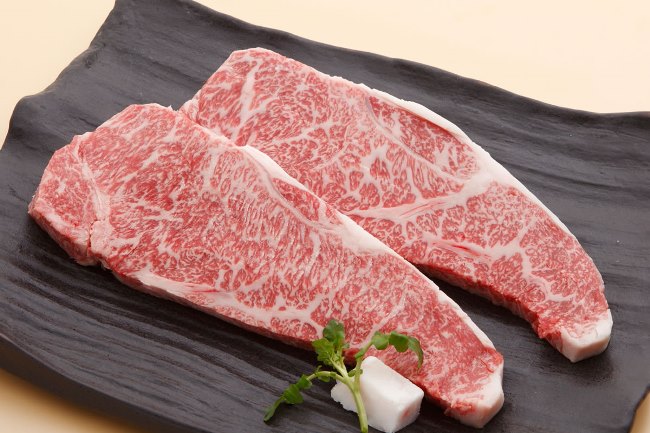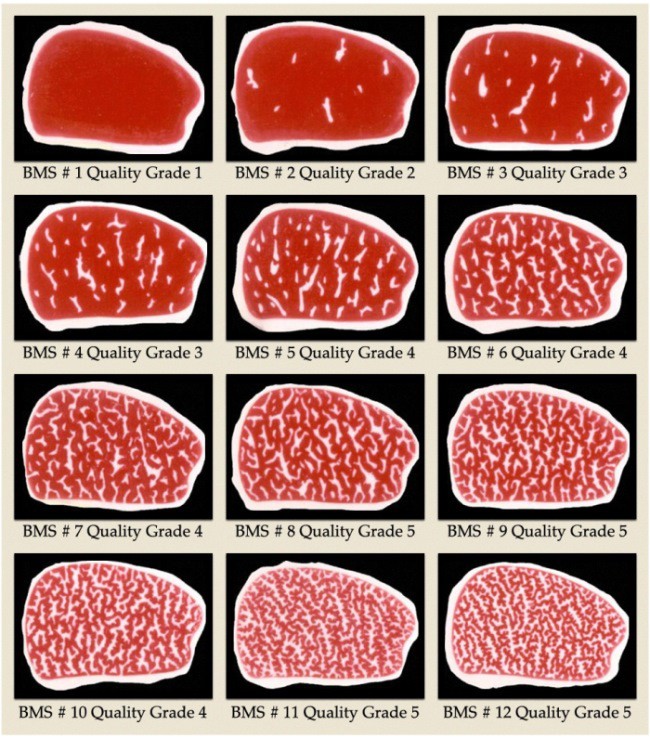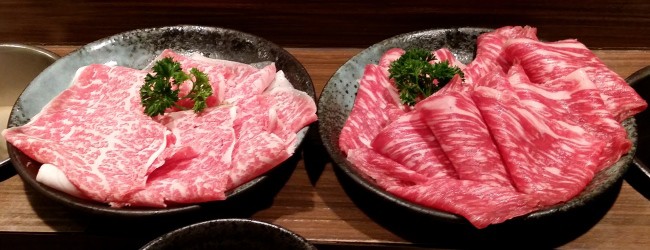[wa-gy ū] wa means Japanese, and gyū means cattle, or simply “Japanese cattle”.
ORIGINS
It melts on your palate like the most sublime foie gras, and leaves a satin finish on your tongue like a dash of smooth-as-silk whisky. To gourmands all over the world, wagyu beef represents luxury dining at its finest.
Yet it might be surprising that unlike many luxury foods, Japanese beef has a history of less than 100 years.
Indeed, beef was banned as a food product for much of Japan’s feudal history. Buddhist influences prohibiting beef consumption are often cited as the primary reason for the ban. Other factors, like the lack of grazing ground for cattle and the valuable status of cattle as draught animals for the cultivation of rice (a Japanese dietary necessity), might also have contributed to the taboo.
The advent of the Meiji Restoration however was a catalyst for great political and cultural reformation in Japan. The Meiji-era oligarchs encouraged the adoption of what was regarded to be beneficial Western practices. The lifting of the ban on beef was seen as being consistent with the reformist movement, although undoubtedly, political motivations to weaken the power of the Buddhists may have played a major role as well.
Whatever the underlying reasons, 1919 was a year for gourmands to rejoice, because it was then that wagyu was created. (wagyu simply means “Japanese cattle”).
Various European species were crossbred with Japanese cattle under a government sponsored program, and produced what are now the four official Wagyu breeds: the Japanese Black, the Japanese Brown, the Japanese Poll and the Japanese Shorthorn.
WHAT MAKES WAGYU BEEF SPECIAL?
Examine a cut of fine beef, and you will notice a large amount of intra-muscular fat. The whiteness of the fat contrasts with the red meat, forming a marble-like pattern.
Indeed, in most countries, the more marbled the fat, the more tender and flavorful the meat, and consequently the higher the grade of the beef. The highest grade of beef (prime beef) under the USDA grading system needs to have 6-8 percent of marbled fat.
In comparison, top quality wagyu boasts 20-25 percent marbled fat.
This extremely high degree of marbled fat is what gives wagyu beef its superior texture and taste. Yet this fat is mostly monounsaturated, which can actually lower LDL (or ‘bad’) cholesterol. This should provide guilty relief to fans of wagyu beef.
The most famous form of wagyu is undoubtedly ‘Kobe Beef’. This refers specifically to beef from the Tajima strain of Japanese Black wagyu, of the Hyogo Prefecture in Kobe. Among all the wagyu breeds, Tajima wagyu is prized for its ability to develop extremely high degrees of marbling.
Kobe beef, however, is by no means the only notable type of wagyu beef. For example, Matsuzaka beef from Mie, and Mishima beef from Mishima Island are regarded by many Japanese as superior to Kobe beef.
HOW WAGYU BEEF IS PRODUCED
Such intense marbling in wagyu beef occurs not only due to superior genetics, but also to the painstaking care taken in their rearing.
Grazing space is scarce in Japan so most wagyu on the island are raised in barns and pens. The inactivity of the cattle not only avoids the physical dangers of grazing, but also aid in the formation of marbled fat.
The feeding process of the wagyu cattle is carefully regulated, with different feeds during the various stages of growth. During the first stage, the diet for the calf tends to be low in energy and high in roughage. At around 10 months of age, the cattle enter into the fattening period when high energy feed will be given, until they are slaughtered at around 28 months.
It is essential that the cattle are kept on feed throughout the entire fattening process. During summer, when the high temperatures and humidity cause the cattle to lose their appetites, beer is fed to the wagyu to stimulate their appetites. They are given a bottle of beer a day until their appetite returns. If they are eating normally, no beer is given at all.
The cattle are kept in a state of optimum relaxation, with many farmers massaging the animals with oil or even sake regularly. While the oft-stated reason is that a beautiful hide leads to tasty meat, the truth is probably that massaging eases muscular tension and improves the distribution of the subcutaneous fat.
However, not all wagyu is raised in Japan. The high demand (especially for Kobe Beef) led to wagyu cattle being exported to be reared on ranches overseas, mainly in California and Australia. Some Californian ranches allow their calves to roam freely until they are a year old, after which their methods will often mirror that of their Japanese counterparts to encourage maximum marbling.
But in order to obtain the appellation “Kobe beef”, the cattle must be shipped back to Kobe for the final stages of its feeding, slaughter and final grading. While many have deemed this move as more politically and marketing-driven (similar to the ‘terroir’ debate for sparkling wines), it is probably at worst an assurance of quality for the consumer.
Controversy has always surrounded ‘Kobe-style’ beef or non-Japanese graded ‘wagyu’ steaks on restaurant menus, complete with matching price tags. While some may decry these practices as bordering on fraud, one must remember that there is nothing mystical about Japanese-reared wagyu. So long as ranches adopt the same painstaking attention to the rearing of these genetically superior cattle, the result will be highly marbled and tender wagyu beef, regardless of place of rearing.
As they say, the proof of the pudding is in the eating.
WAGYU DISHES
Because of the finely marbled fat, special care must be taken not to overcook the meat as the fat melts quickly and burns easily.
Sear it quickly on a hot pan for no more than 90 seconds on each side. Cooked this way, the beef melts in your mouth, leaving a buttery taste that lingers. You don’t even need a steak knife to cut the meat – a fork would suffice.
The length of its finish makes wine a perfect pairing for wagyu beef. However, make sure that the wine does not overpower the rich flavor of the meat. Avoid full-bodied reds with lots of tannins. Instead, choose a soft elegant Pinot Noir with enough complexity to complement and accentuate your wagyu experience.
Many Japanese prefer to retain the meat’s natural flavors by eating it sashimi-style, seasoned with a touch of soy sauce, dashi stock and spring onions. Wagyu shabu-shabu, with the beef cooked briefly in boiling broth, is another traditional serving option.
Other methods of preparation include slicing it thin and serving it carpaccio style, using flank, skirt and rib-eye steaks that are grilled to no more than medium rare, or as Americans would have it, as hamburger patties.





